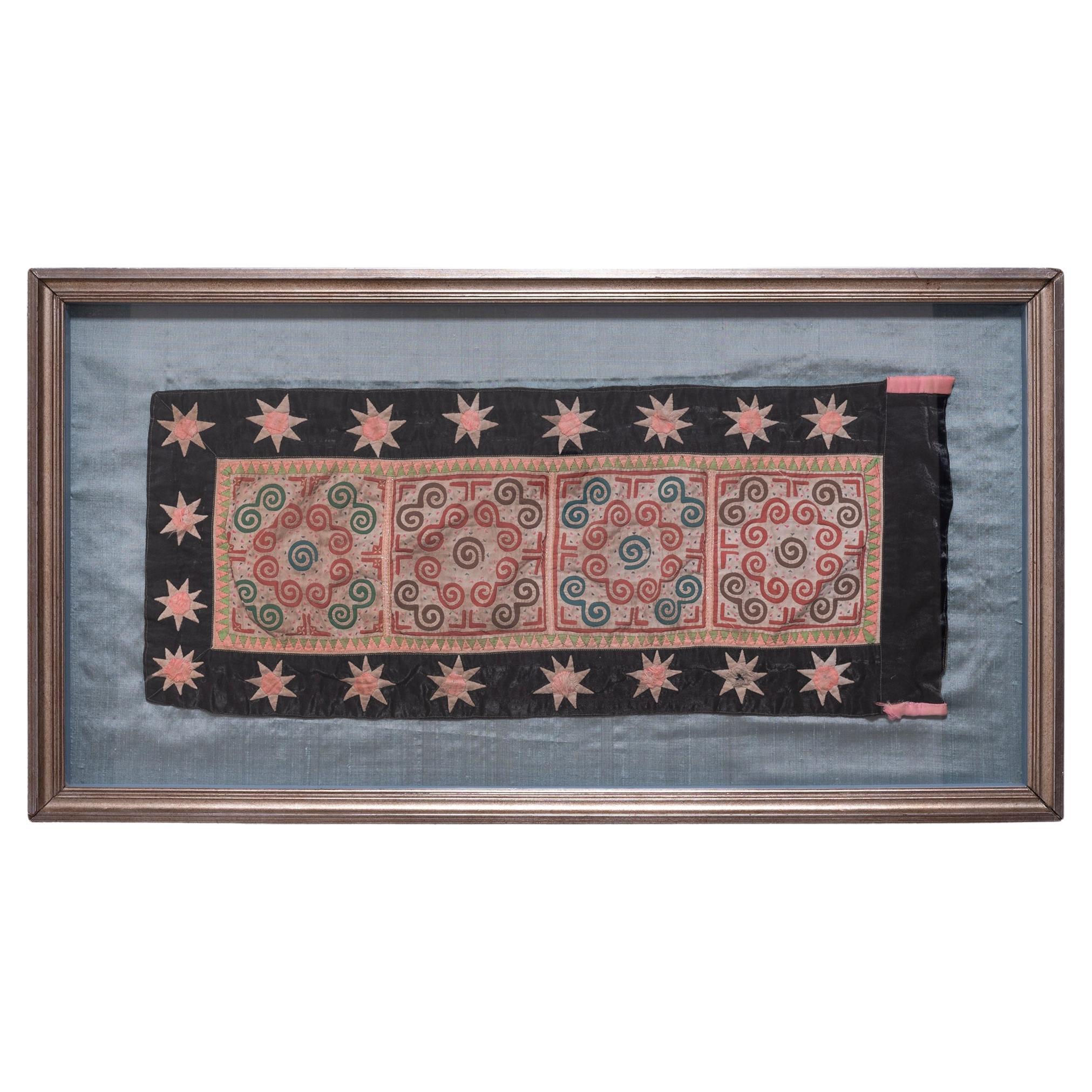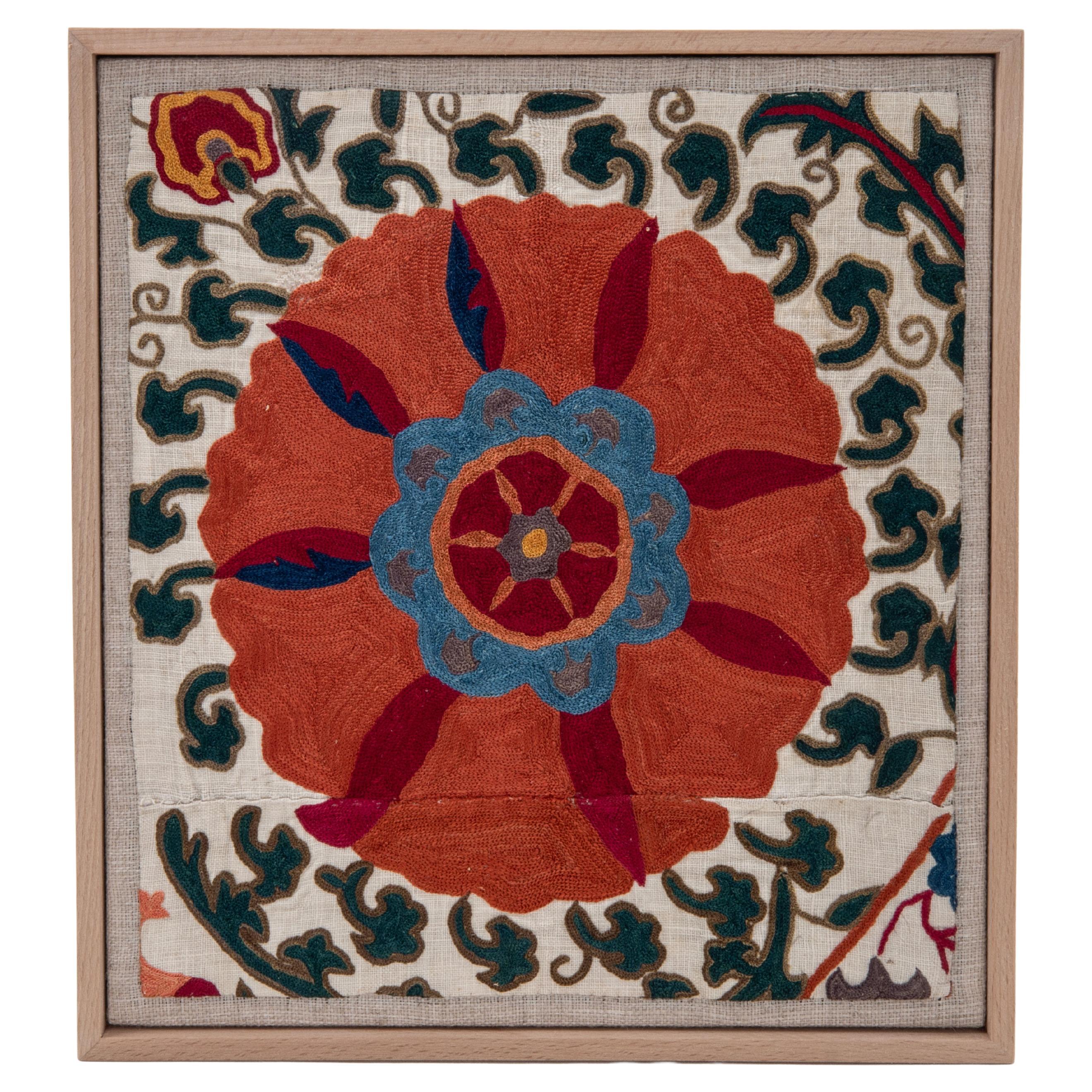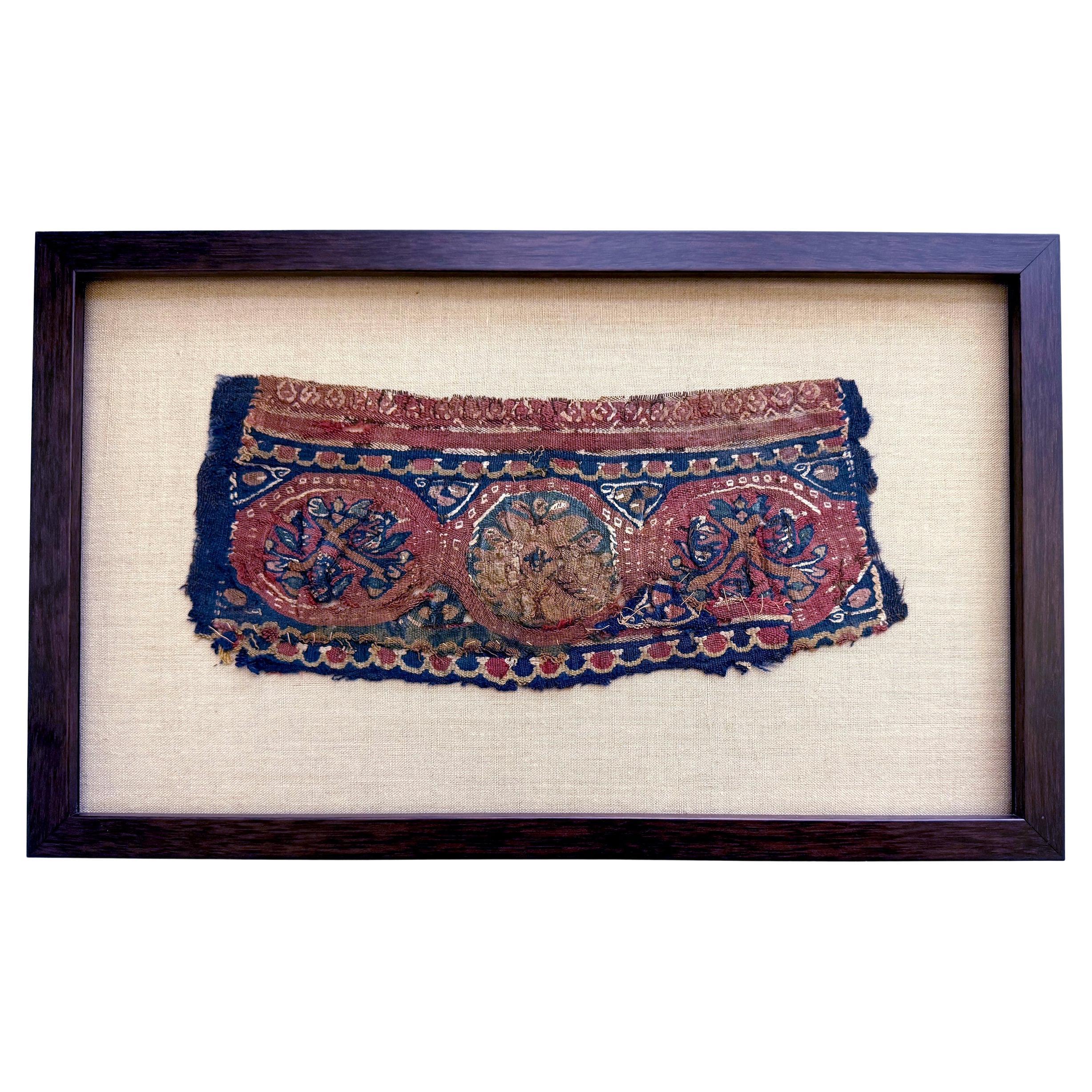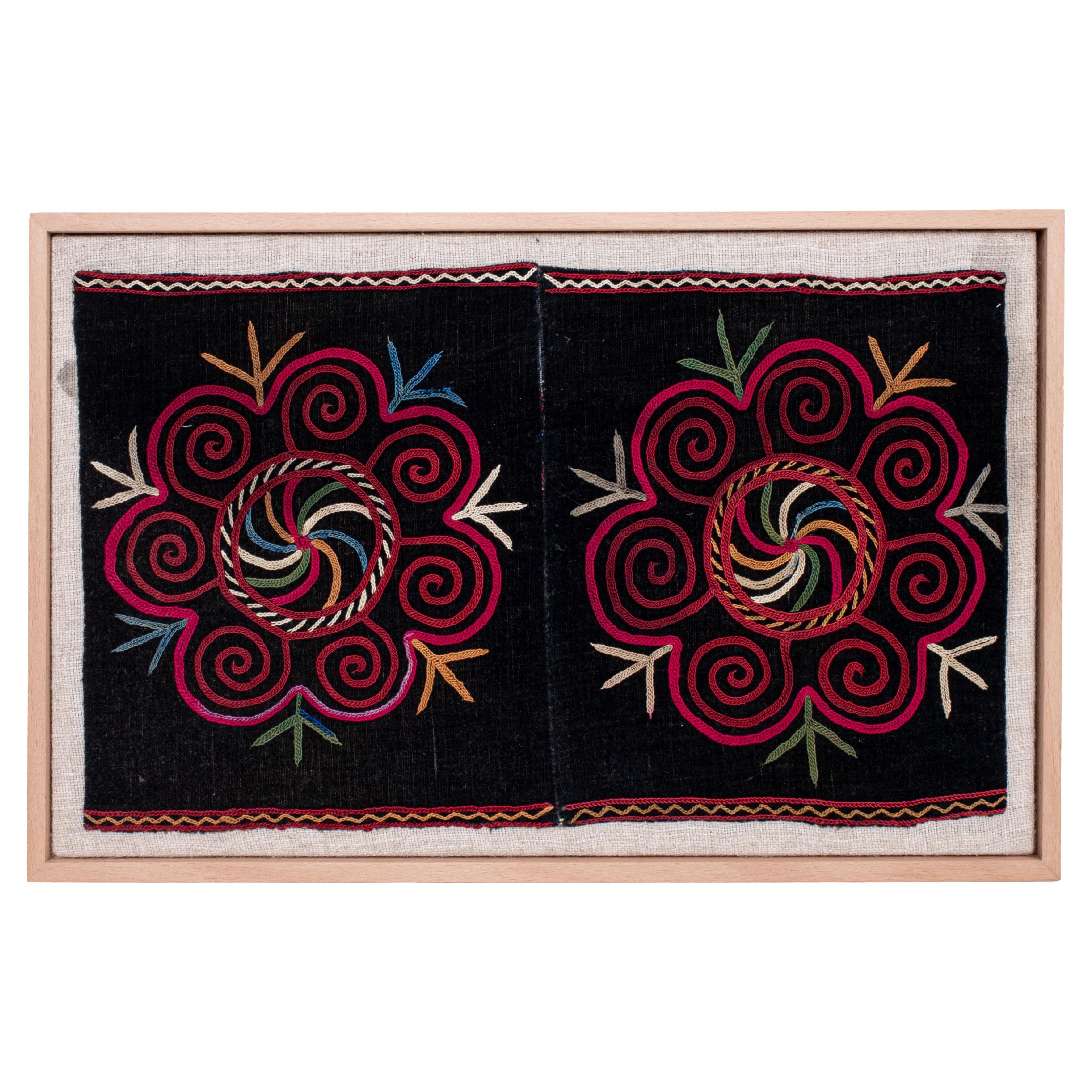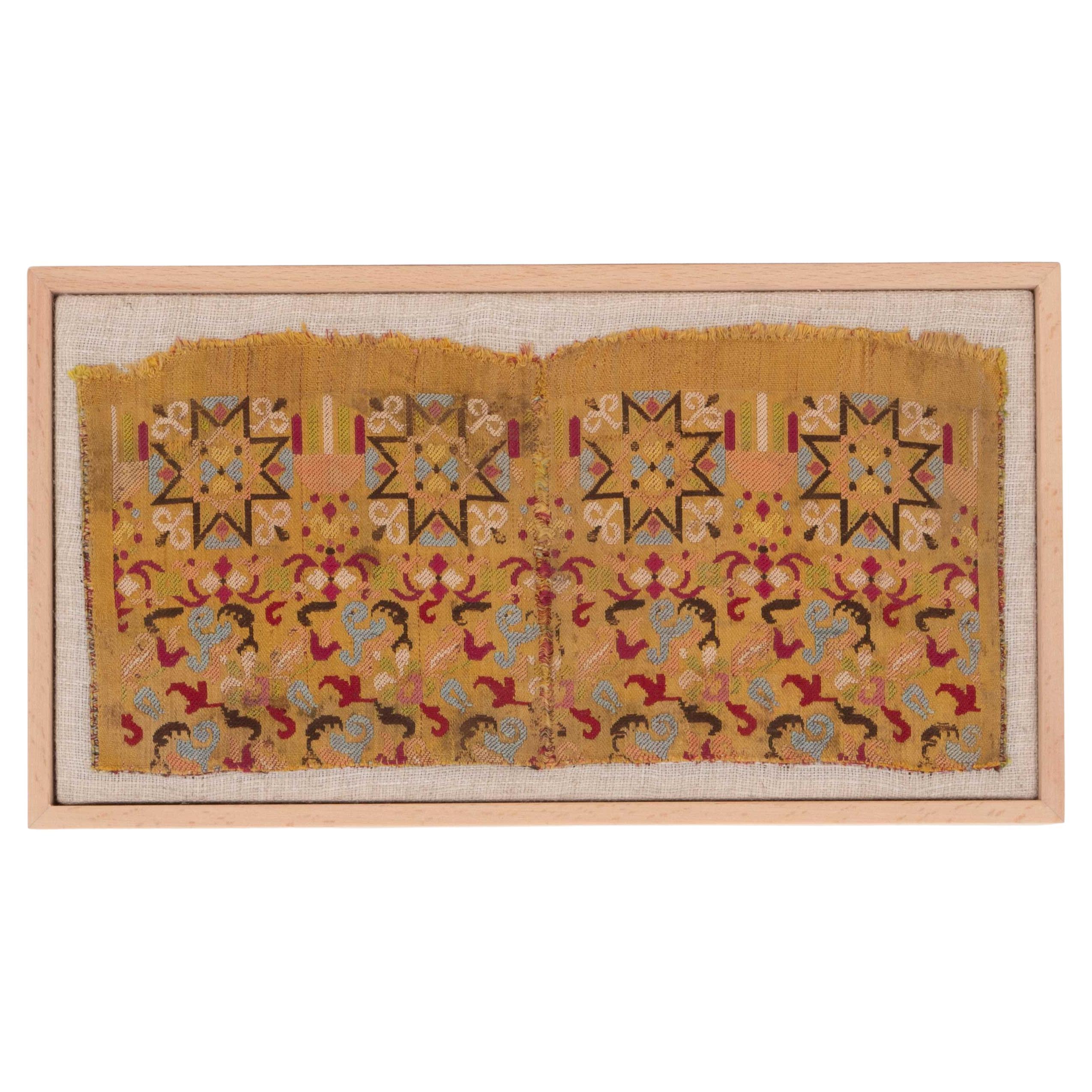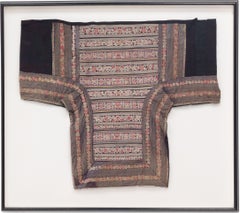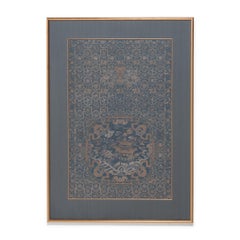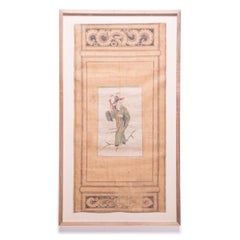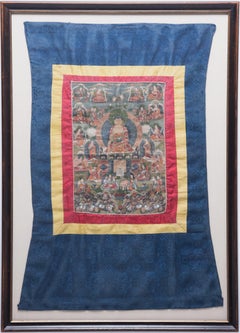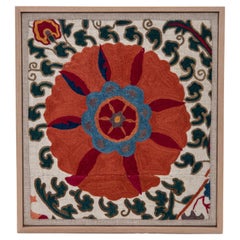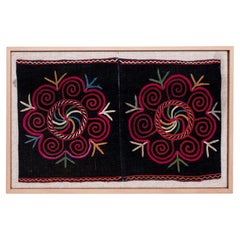Items Similar to Framed Hmong Appliqué Textile Fragment
Want more images or videos?
Request additional images or videos from the seller
1 of 5
UnknownFramed Hmong Appliqué Textile FragmentMid-20th Century
Mid-20th Century
$2,280
£1,772.11
€2,006.51
CA$3,257.68
A$3,546.85
CHF 1,857.08
MX$42,573.98
NOK 23,437.51
SEK 21,976.65
DKK 14,983.92
About the Item
Dating to the mid-20th century, this colorful Hmong textile is a classic example of the appliqué technique used for the traditional cloth known as paj ntaub. Appliqué is the process by which patches of fabric are sewn onto a different piece of fabric to form a new pattern.
Paj ntaub is an integral part of Hmong culture and fashion, in particular a source of great pride to Hmong women. The brightly colored embellishments, often on darker fabric, were a staple for clothing used in traditional celebrations including marriages, births, holidays and other important events. Through periods of persecution, Hmong women began preserving their language through imagery, stitching secret messages onto their clothes as they migrated from village to village. The paj ntaub quickly became a way to hold onto the identity and culture of the Hmong people, even going so far as evolving into story clothes depicting scenes, events, and narratives from their oral history.
This framed paj ntaub fragment is comprised of intricate appliqué patterns enclosed by a black border with white and pink stars (hnub qub). At the center of the textile are four squares with various ancient Hmong symbols. Each has a central coil (lub qwj yees) symbolizing family growth and interrelatedness. Surrounding the spiral are eight snails (qab qwj) which represent the union of two families and can also symbolize the spinning motion used in many spiritual chants. Lining each square is a step motif (theem ntaiv), which can be interpreted to represent the nomad lifestyle of the Hmong people. Lastly, there is a border with a repeating triangle pattern surrounding all four squares representing mountains (rooj), believed to embody strength. While some of the traditional meaning of paj ntaub imagery has been lost with various interpretations, the art remains alive, preserving connections with a lost homeland.
From the collection of Frances and Gary Comer.
- Creation Year:Mid-20th Century
- Dimensions:Height: 18.5 in (46.99 cm)Width: 34.5 in (87.63 cm)Depth: 1.5 in (3.81 cm)
- Medium:
- Movement & Style:
- Period:
- Condition:
- Gallery Location:Chicago, IL
- Reference Number:Seller: CFC2851stDibs: LU1036312985552
About the Seller
5.0
Vetted Professional Seller
Every seller passes strict standards for authenticity and reliability
1stDibs seller since 2018
33 sales on 1stDibs
Typical response time: 12 hours
- ShippingRetrieving quote...Shipping from: Chicago, IL
- Return Policy
More From This Seller
View AllEmbroidered Miao Baby Carrier Textile
Located in Chicago, IL
The connection between love and embroidery is nowhere stronger than among the minority peoples of China. Hand-stitched by a mother herself or gifted by the women in her family, the t...
Category
Early 20th Century Folk Art Mixed Media
Materials
Cotton, Silk, Thread
Qing-Dynasty Silk Brocade Chair Panel with Pagoda & Crane
Located in Chicago, IL
This framed silk brocade tapestry is one half of a magnificent Qing-dynasty chair panel, or chair strip. Because traditional Chinese seating was not upho...
Category
Mid-19th Century Qing Mixed Media
Materials
Silk
Chinese Mythical Immortal Screen Painting, c. 1850
Located in Chicago, IL
Since the 12th century, people in China have used folding screens and doors to partition and decorate their homes - the vivid scenes backing the screens added life and color to a roo...
Category
Mid-19th Century Figurative Paintings
Materials
Fabric, Ink, Pigment
Tibetan Thangka of Sakyamuni, c. 1880
Located in Chicago, IL
Historically in Buddhist Tibet, patrons and monks commissioned thangka art, or sacred painting, to focus their meditations and prayers. This 19th-century Tibetan Thangka, painted in rich red, green, and blue pigments, still maintains incredible vibrancy.
The central figure is the Sakyamuni Buddha, seated in the diamond position with alms bowl...
Category
19th Century Figurative Paintings
Materials
Linen, Silk, Pigment
Qing-Dynasty Silk Brocade Chair Panel with Fu Lion
Located in Chicago, IL
This framed silk brocade tapestry is one half of a magnificent Qing-dynasty chair panel, or chair strip. Because traditional Chinese seating was not upho...
Category
Mid-19th Century Qing Mixed Media
Materials
Silk
Chinese Mythical Immortal Screen Painting, c. 1850
Located in Chicago, IL
Since the 12th century, people in China have used folding screens and doors to partition and decorate their homes - the vivid scenes backing the screens added life and color to a roo...
Category
Mid-19th Century Figurative Paintings
Materials
Fabric, Ink, Pigment
You May Also Like
Framed Hmong Appliqué Textile Fragment
Located in Chicago, IL
Dating to the mid-20th century, this colorful Hmong textile is a classic example of the appliqué technique used for the traditional cloth known as paj n...
Category
20th Century Southeast Asian Folk Art Tapestries
Materials
Fabric
Framed Antique Uzbek Suzani Embroidery Fragment , 19th Century.
Located in Istanbul, TR
First the fragment has been hand backed on a linen fabric, then stretched over a wooden stretcher and finished with a wooden frame.
19th C. Uzbekistan
Ready to go on a wall.
Framed ...
Category
Antique Mid-19th Century Uzbek Suzani Decorative Art
Materials
Silk
Framed Antique Coptic Textile Fragment from Byzantine North Africa
Located in Atlanta, GA
A small piece of antique Coptic textile woven as a horizontal band with two linear scallop borders flanking three central medallion design. Each medallion has a concentric pattern wi...
Category
Antique 15th Century and Earlier Egyptian Archaistic Shadow Boxes
Materials
Wood, Wool
Framed Kazak Embroidery Fragment Early 20th C.
Located in Poole, GB
Framed Kazak Embroidery Fragment Early 20th C.
Professionally mounted and framed.
Textile Hand-stitched onto hand loomed linen, with no glue used.
Ready to Hang with Wire on Back.
Category
20th Century Kazakhstani Decorative Art
Materials
Cotton
Professionally Framed Moroccan Belt Fragment, Early 20th C.
Located in Istanbul, TR
First the fragment has been hand backed on a linen fabric, then stretched over a wooden stretcher and finished with a wooden frame.
Early 20th C.. Morocco
Ready to go on a wall.
Category
Early 20th Century Moroccan Folk Art Pillows and Throws
Materials
Silk
Professionally Framed Greek Embroidered Chemise Hem Fragment, 19th C.
Located in Istanbul, TR
First the fragment has been hand backed on a linen fabric, then stretched over a wooden stretcher and finished with a wooden frame.
Late 19th C. Greece.
Ready to go on a wall.
Frame...
Category
Antique 19th Century Greek Folk Art Decorative Art
Materials
Silk
More Ways To Browse
Applique Vintage
Framed Textile Art
Colorful Textile
Mid Century Fragment
Hmong Vintage
Vintage Applique Patterns
Vintage Hmong Textiles
Douglas Hill
Elsa Morante
Fall Of Phaeton
Gawaine Dart
Georges Goldstein
Gerhard Taubert
German Pottery With Triangle Mark
Gloria Ross
Icilio Federico Joni
Jacqueline Au Chevalet
Jim Mcdonough
